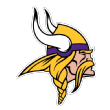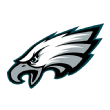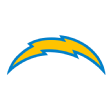The 2019 NFL draft is finally here, and the Cardinals started it off selecting Oklahoma’s Kyler Murray, their second quarterback selected in the first-round in as many years. We’re tracking every pick for Rounds 1-7, and you can also see all of the best available prospects in the class.
NFL Nation reporters assess every first-round pick:
Kyler Murray, QB, Oklahoma | Highlights
Why they picked him: The Cardinals drafted Josh Rosen in the first round last season, so they don’t need a quarterback. But there was no way first-year coach Kliff Kingsbury was going to pass on Murray, whom he has known since 2012 when he started recruiting him out of high school. The Heisman Trophy winner ran the Air Raid offense under coach Lincoln Riley at Oklahoma with success, and Murray will be running the same offense for Kingsbury in Arizona.
Biggest question: Can Murray be the same dynamic, playmaking, big-armed quarterback in the NFL as he was in college? Murray’s skill level is not in question. What is in questions is whether the 5-foot-10 quarterback can run the Air Raid effectively when everyone else on the field is as or more athletic than what he faced at Oklahoma. Murray’s athleticism and ability to create plays was unmatched in college. But in the NFL, Murray’s injury risk is much greater, and the Cardinals can’t afford for the No. 1 overall pick to get hurt. — Josh Weinfuss
Nick Bosa, DE, Ohio State | Highlights
Why they picked him: The 49ers added former Kansas City defensive end Dee Ford via trade, but coach Kyle Shanahan is a firm believer that edge rusher is the most important position aside from quarterback. Over the past two seasons, the Niners have lost 11 one-possession games, buoying Shanahan and general manager John Lynch’s desire to add what Shanahan calls “closers” — the type of players who can make that one big play to turn losses into wins in the fourth quarter. Bosa is widely regarded as that type of player, and, given his brother Joey’s success in a similar defensive scheme with the Chargers, it’s not difficult for the Niners to envision Bosa teaming with Ford to form a tandem akin to Los Angeles’ Joey Bosa and Melvin Ingram.
Biggest question: Can Bosa stay healthy and productive given the rigors of the NFL? Bosa played in just two-plus games before a bilateral core injury ended his junior season and college career. That injury came less than three years after he suffered a torn ACL in November 2015. — Nick Wagoner
Quinnen Williams, DT, Alabama | Highlights
Why they picked him: Looking to minimize risk, general manager Mike Maccagnan — on the hot seat — takes the safest player in the draft. “No flaws,” one AFC scout said of Williams, a disruptive force who produced a nation-leading 52 pressures among interior pass rushers. The Jets believe Williams, the 2018 Outland Trophy winner, is a potential “gold jacket” player. He was a full-time contributor for only one season at Alabama, so he’s not even close to reaching his ceiling — and that’s scary. This is fifth time since 2011 the Jets have taken a defensive lineman in the first round.
Biggest question: Why not Kentucky OLB Josh Allen? He would’ve filled a big hole in the Jets’ base 3-4 front, which lacks an edge-rushing linebacker. Another question: Where does Williams fit? He plays the 3- and 5-technique positions, which makes him similar to Leonard Williams and Henry Anderson. New defensive coordinator Gregg Williams can play multiple fronts, but it won’t be easy to get all three on the field at the same time. Leonard Williams is entering the final year of his contract; this could hurt his negotiating leverage. — Rich Cimini
Clelin Ferrell, DE, Clemson | Highlights
Why they picked him: The Raiders, who had a league-low 13 sacks last season, need a pass-rushing defensive end in the worst way. Introducing the reigning Ted Hendricks Award winner from the national champions. Ferrell goes a tad higher than expected, but he does address a need with 27 career sacks, 11.5 last season.
Biggest question: Surely Ferrell could have been taken later, so why didn’t the Raiders trade down and gather some more picks? At 6-foot-5, 260 pounds with 4.8 speed in the 40, Ferrell is a specimen. But is he a Khalil Mack-type edge rusher? That’s what the Raiders are still missing. — Paul Gutierrez
Devin White, ILB, LSU | Highlights
Why they picked him: The Bucs needed a viable replacement at middle linebacker after losing Kwon Alexander and might have found themselves the next Patrick Willis. Like Alexander, White also served as a team captain at LSU. In fact, when the Bucs were interviewing White, they actually had Alexander’s picture on the wall. Like Alexander, White is a highly effective blitzer — perfect for Todd Bowles’ scheme. He recorded the second-best pressure percentage among FBS players with at least 100 pass rushes in 2018, according to ESPN Stats & Information research. He has also demonstrated reliability in coverage.
Biggest question: The Bucs, who up until last year hadn’t had a player reach double-digit sacks in 12 seasons, passed on the draft’s best edge rusher in Josh Allen. Many would argue that Allen, who registered 17.0 sacks last year, could provide a more immediate impact. By passing on Ed Oliver, they also lost one of the best possible replacements for Gerald McCoy. As for White, there aren’t many weak spots, other than getting sucked up at times in play-action and needing to get better at diagnosing such plays. — Jenna Laine
Daniel Jones, QB, Duke | Highlights
Why they picked him: The Giants needed a future franchise quarterback. Manning is 38 years old and on the final year of his current contract. One coach who watched Jones’ college tape thought he had a “fairly high ceiling” and thought he checked all the boxes, especially behind the scenes and off the field. General manager Dave Gettleman recently said that was important for a quarterback stepping into Manning’s footsteps in New York. It also doesn’t hurt that Jones was trained by respected Duke coach David Cutcliff, who also worked with Eli and Peyton Manning in college. It helped refine and prepare Jones for the NFL.
Biggest question: Does Jones have franchise quarterback talent? One scout thought Jones was a “backup” with “pedestrian talent.” Jones went to Duke as a non-scholarship player and isn’t exactly blessed with a cannon arm or a dynamic skill set. ESPN draft analyst Todd McShay didn’t see it with Jones, either. He had him ranked as his 59th-best player in the draft. The Giants took him significantly higher. — Jordan Raanan
Josh Allen, DE, Kentucky | Highlights
Why they picked him: They couldn’t pass up the value. Allen became available when Oakland surprised everyone by taking Clelin Ferrell with the fourth pick. Tampa’s selection of Devin White meant Ed Oliver and Josh Allen were going to be available and that was a dream scenario. Allen was an extremely productive at Kentucky (31.5 sacks, including an SEC-high 17 last season) and immediately makes the Jaguars’ pass rush even more dangerous as a complement to Yannick Ngakoue and Calais Campbell.
Biggest question: Allen was a 3-4 linebacker at Kentucky, and the Jaguars play a 4-3, so he’ll likely have to move to defensive end with the Jaguars. He doesn’t quite fit as the team’s “big” end (the spot Calais Campbell plays) even though he’s 6-foot-5, 262 pounds, but will be used extensively in the third-down package. — Michael DiRocco
T.J. Hockenson, TE, Iowa | Highlights
Why they picked him: Hockenson is the best offensive playmaker left on the board and the best tight end in the draft. He’s a complete tight end and one who can handle both blocking duties and is a strong pass catcher. All along, general manager Bob Quinn and head coach Matt Patricia pointed to tight end as a clear need for the franchise. They signed Jesse James in free agency, but they view Hockenson as more of a complete tight end. The position was useless for Detroit this year. Now, the Lions have to hope Hockenson can solve that.
Biggest question: With Oliver on the board, why does Detroit need a tight end? Oliver is a potential transcendent defensive talent and someone who could play all across Detroit’s defensive line. Hockenson is a very, very good talent, but if Oliver ends up being an Aaron Donald-type player and Hockenson doesn’t develop into a top 5 NFL tight end, this pick could be reminiscent of the last time the Lions took a tight end in the top 10. — Michael Rothstein
Ed Oliver, DT, Houston | Highlights
Why they picked him: Oliver was considered a near-lock to be a top-10 pick in the draft and fell to the Bills at No. 9 with help from the Oakland Raiders’ surprise selection of Clelin Ferrell at No. 4. He was the obvious selection for a team that lost stalwart defensive tackle Kyle Williams to retirement this offseason. He should start immediately alongside Star Lotulelei for coach Sean McDermott, who personally attended Oliver’s pro day at Houston.
Biggest question: The Bills won’t raise too many eyebrows by picking Oliver, who was the common-sense choice at the spot. One question is whether the Bills should have traded down in the first round and targeted another player slipping down the board. Picking Oliver also does not help the Bills’ offense, which finished 30th last season and still could use help across the board. However, general manager Brandon Beane stayed true to his philosophy of taking the best player available. — Mike Rodak
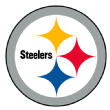 10. Pittsburgh Steelers from Denver Broncos
10. Pittsburgh Steelers from Denver Broncos
Devin Bush, ILB, Michigan | Highlights
Why they picked him: The Steelers made the bold decision to jump 10 spots in the first round to get one of the best overall players in the draft. Pittsburgh needed to replace Ryan Shazier once and for all with a playmaking inside linebacker who can run sideline to sideline. Bush has 4.4 speed and loves to hit at 234 pounds. Huge get for Pittsburgh. One AFC exec called him the second-best player in the draft next to Kyler Murray.
Biggest question: Can the Steelers strengthen the rest of the roster without a second-round pick in this week’s draft? The Steelers gave up this year’s second-rounder and next year’s third-rounder for Bush. That’s a reasonable haul, but the Steelers still need help at cornerback, tight end and outside linebacker, among other positions. Pittsburgh has a strong roster but isn’t without its holes. — Jeremy Fowler
Jonah Williams, OT, Alabama | Highlights
Why they picked him: The Bengals came into the draft needing to upgrade their linebackers or offensive line, and with both linebackers off the board, taking one of the best offensive linemen in the draft was a no brainer. Although the Bengals re-signed right tackle Bobby Hart and signed free agent guard John Miller to play on the right side, neither one are necessarily long-term solutions. Williams is projected to play multiple positions, which means he could be plugged in anywhere on the line. For a team that often brings its rookies along slowly, being versatile means Williams could contribute early at minimum and potentially even work his way into the starting lineup in training camp.
Biggest question: The Bengals haven’t exactly hit on their offensive linemen lately, with 2015 first-rounder Cedric Ogbuehi and second-round Jake Fisher both considered busts. It’s too early to tell for 2018 first-round pick Billy Price. That means it’s important for them to knock this pick out of the park, and nobody quite knows where he fits outside of the Bengals’ building. Williams played tackle at Alabama, and some think he makes a better fit at guard in the NFL. Bengals coach Zac Taylor thinks he can play all over, but said he’s proved that left tackle is his natural position. With Cordy Glenn anchoring that position, that would require some shifting around on the offensive line. Taylor said they just wanted to get Williams in the building, and put their five best on the field, letting things work itself out naturally. — Katherine Terrell
Rashan Gary, DE, Michigan | Highlights
Why they picked him: GM Brian Gutekunst has only been on the job for 15 months but this much is clear: He knows the value of big people who can affect quarterbacks. He signed two of them to sizable deals in free agency – Za’Darius Smith (four years, $66 million) and Preston Smith (four years, $52 million). Za’Darius Smith can rush from the inside, which opens up a spot on the edge for Gary in the third-down sub packages. The Packers likely view Gary as an elephant position, their catch-all term for a defensive lineman/outside linebacker who can play multiple spots. He can move, running a 4.58 40-yard dash at the combine. “He’s got rare gifts, a guy that size who runs that speed,” said Packers college scout Joe Hueber, who added that Gary will start out as an outside linebacker.
Biggest question: Why the Packers didn’t take an offensive tackle. Only one, Alabama’s Jonah Williams, had come off the board before the Packers picked at No. 12. There’s also injury concern. Gary had a shoulder injury – a labrum tear – that he played through last season at Michigan. Does that sound like Kevin King, the Packers’ top draft pick in 2017 who came into the NFL with a shoulder injury, tried to play through it and eventually needed surgery before his rookie year ended? Gary’s production on the field doesn’t jump off the stat sheet, either, recording just 3.5 sacks in nine games last season as a junior. — Rob Demovsky
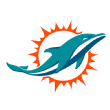 13. Miami Dolphins
13. Miami Dolphins
Christian Wilkins, DT, Clemson | Highlights
Why they picked him: The Dolphins love Wilkins and he’s a perfect first pick to be a face of Brian Flores’ new culture in Miami. Dolphins general manager Chris Grier said he saw five elite defensive linemen in this draft, and Wilkins was one of them. He was the highest-rated player on their board, and Grier called it an “easy decision” to take him. The Dolphins finished in the bottom-five in run defense, total defense and sacks, so they hope Wilkins can make a big impact there at defensive end and nose tackle. He is a great fit in Brian Flores’ multiple scheme, and the Dolphins feel great about his “charismatic personality” and strong production.
Biggest question: Dwayne Haskins and Drew Lock were sitting right there for Miami to grab its franchise quarterback, but Grier decided to pass on both players saying Wilkins was higher on the board. It became clear recently that Grier didn’t love this quarterback class and he would rather add top-tier defensive line talent. Wilkins seems like a strong bet to be a solid pro, but quarterback is the most important position in sports, so the careers of Lock and Haskins will be followed closely by Dolphins fans. Did they pass on a franchise-changing quarterback? — Cameron Wolfe
Wolfe: Analysis for every Dolphins draft pick
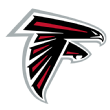 14. Atlanta Falcons
14. Atlanta Falcons
Chris Lindstrom, G, Boston College | Highlights
Why they picked him: Team owner Arthur Blank made it clear that the team needed to get younger and better along the offensive line, despite the free-agent additions. Lindstrom is a tough guy who impressed during a hour and a half private workout for the whole Falcons’ contingent during a Saturday. Lindstrom is versatile enough to play guard or tackle, but his physicality gives the Falcons big guard who can block in the run game and pass protect for Matt Ryan. Oh, by the way, it probably helped that he went to Ryan’s old school, Boston College. The Falcons signed guards James Carpenter and Jamon Brown in free agency, but Lindstrom has to start.
Biggest question: Most folks don’t take a guard that high at No. 14, so the Falcons will take heat about looking at a guard rather than a tackle. One NFC scout said Lindstrom doesn’t have great power, but that same scout praised Lindstrom as tough, quick, an athletic. — Vaughn McClure
Dwayne Haskins, QB, Ohio State | Highlights
Why they picked him: They needed a quarterback who could generate a little buzz. Haskins was a record-setting quarterback at Ohio State with special arm talent and a strong work ethic. The Redskins have Colt McCoy and Case Keenum and an injured Alex Smith, whose future remains uncertain because of his right leg injury. They needed a young quarterback. Haskins played high school ball in suburban Maryland – at the same school where Redskins owner Daniel Snyder’s son is now a sophomore football player.
Biggest question: How long will it take him to get ready to play? The Redskins have a coaching staff that needs to win now. That’s why it was not a unanimous decision in the building to acquire Haskins. His mechanics need to improve, from his footwork in the pocket to his release. There was concern that Ohio State did not run enough pro concepts to give teams a great feel for how his game would immediately transfer to the NFL. — John Keim
Brian Burns, DE, Florida State | Highlights
Why they picked him: The Panthers finished 27th in the NFL in sacks last season and were looking to bolster their pass rush. They needed a premier edge rusher to play end and outside linebacker with the defense transitioning to more odd-man fronts. They needed a long-term replacement for future Hall of Famer Julius Peppers, who retired. They got all of this in Burns, who may be the best pure edge rusher in the draft with 38.5 quarterback pressures and 24 sacks the past three seasons.
Biggest question: Size. The 6-foot-5 Burns is a bit undersized at 249 pounds. There are concerns he may not be able to handle huge tackles simply with his speed. But he has plenty of room to bulk up with an NFL weight program. Otherwise, there doesn’t seem to be many negatives. ESPN analyst and former Panthers coach John Fox thought Burns was good enough to be a top-10 pick. — David Newton
 17. New York Giants (from Cleveland)
17. New York Giants (from Cleveland)
Dexter Lawrence, DT, Clemson | Highlights
Why they picked him: He’s the big body (6-4, 342) that general manager Dave Gettleman likes on his defensive line. Lawrence was a force on the Clemson defensive line before being suspended for the team’s two playoff games for testing positive for a performance-enhancing substance. He fills a hole. Gettleman wants to have a deep rotation of linemen to shuttle in and out of the lineup.
Biggest question: Lawrence is a big boy in the middle of the Giants’ defensive line, but does he bring enough pass rush? Lawrence, who is more of a push-the-pocket player, had 1.5 sacks last season. The Giants were 30th in the NFL last season in sacks and still need to add a dominant pass rusher to their roster. Lawrence doesn’t fill that void. — Jordan Raanan
Garrett Bradbury, C, North Carolina State | Highlights
Why they picked him: This was their guy all along. The Vikings zeroed in on finding the help they need on the interior of the offensive line and had Bradbury on their radar for more than a year. Despite the tackles that were available to Minnesota at No. 18 (Jawaan Taylor, Andre Dillard, Cody Ford), the Vikings had their sights set on Bradbury and weren’t budging despite fielding phone calls from teams interested in seeing if they wanted to trade back. “Bradbury was by far our target tonight when we got into the draft,” general manager Rick Spielman said. Bradbury provides the Vikings with immediate help at the guard or center position. Without even seeing the 18th overall pick in action with his new team, Vikings coach Mike Zimmer said the addition will make the offensive line “a lot better” in 2019.
Biggest question: Where does Bradbury fit? Not knowing which position the former N.C. State center/guard is going to play is a good question for the Vikings to answer over the next four months. The position flexibility Bradbury provides Minnesota will allow the offense to tinker around with its current personnel, too. After two years as an NFL center, Pat Elflein could move back to guard, the position he played for three years at Ohio State, while Bradbury fills his spot at center. Spielman noted how critical that quality was when scouting which offensive lineman this team would take. “One of the points of emphasis that we put on was guys that can play multiple positions, especially up front on the offensive line because if you do have a guy that does get hurt, you can move guys around and still be very good players,” the general manager said. — Courtney Cronin
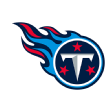
19. Tennessee Titans
Jeffery Simmons, DT, Mississippi State | Highlights
Why they picked him: Simmons, when healthy, is one of the best defensive tackles in the draft. He is likely to start the season on the reserve/PUP list as he is recovering from a torn ACL that happened in February. Simmons is a disruptive player that can pair with Jurrell Casey and make the Titans a very strong defense up the middle. His ability to get instant penetration makes Simmons a force against the run. At the same time, he collapses the pocket from the interior.
Biggest question: The off the field issues associated with Simmons. In March of 2016, a graphic video surfaced of Simmons punching a woman during a fight she was in with Simmons’ sister. Simmons was arrested and faced legal consequences after the incident. He has been a leader at Mississippi State since arriving on campus. “We leaned on each other throughout our time together. I can vouch for him so much. Jeffrey Simmons was one of the best guys in that building and in our community. He is a great guy,” fellow Bulldog Montez Sweat said. — Turron Davenport
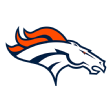
20. Denver Broncos
Noah Fant, TE, Iowa | Highlights
Why they picked him: Because they have tried and tried and tried to find a tight end who gives them some impact in the passing game — they used three picks in the previous four drafts to select a tight end (Jeff Heuerman in 2015, Jake Butt in 2017 and Troy Fumagalli in 2018) — the Broncos grabbed one of the best receiving tight ends on the board. Fant had 19 touchdown receptions in his three seasons with the Hawkeyes and even with T.J. Hockenson on his team, Fant averaged 16.5 yards per catch in 2017 and 13.3 yards per catch this past season. The Broncos haven’t had a tight end catch more 31 passes in a season since 2015.
Biggest question: Right now, Fant is far better as a receiver than he is as a blocker, so he could be limited, at least early on in his career, to working out of the slot or out wide in the Broncos’ offense. If they do line him up at a traditional spot right next to the tackle, Fant is going to have to show he can get off the jam at the line of scrimmage to get himself into his route. — Jeff Legwold
Darnell Savaage, S, Maryland | Highlights
Why they picked him: The Packers needed a centerfielder, and they got one who hawks the ball and can run. Savage ran a 4.36 40-yard dash at the combine, fourth-fastest among all defensive backs (corners included). He’s also not afraid to tackle. He had seven interceptions in his last two seasons at Maryland, where he played 40 career games over four years. With Savage, the Packers can play free-agent signing Adrian Amos, formerly of the Bears, closer to the line of scrimmage at strong safety. “I feel as if I’m extremely versatile,” Savage said shortly after he was picked. “Always around the ball, always making plays, just a playmaker, fast and I like to hit.”.
Biggest question: Did they need to trade up from No. 30 to get him? Probably because indications were the Colts (at No. 26), who were interested in a safety and had Savage high on their board. The Packers traded picks 30, 114 and 118 to Seattle to move up nine spots. The second of those two fourth-round picks (No. 118) was the pick the Packers acquired last fall from the Redskins in exchange for safety Ha Ha Clinton-Dix. The only real concern about Savage is his size; he measured 5-foot-10¾ at the combine. — Rob Demovsky
Andre Dillard, OT, Washington State | Highlights
Why they picked him: The Eagles love to go big in the first round. They’ve now selected seven linemen (three offensive, four defensive) in the first round in eight drafts under executive vice president of football operations Howie Roseman. Dillard, one of the top-rated tackles in the draft, fell further than expected. The Eagles moved up to select their potential left tackle of the future with the career of 37-year-old Jason Peters winding down.
Biggest question: What does the coaching staff do with former Australian rugby league player Jordan Mailata. With Halapoulivaati Vaitai also on the roster behind Peters and Lane Johnson, there’s a good amount of talent and only so many spots to go around. But that’s a very good problem to have for Philly. — Tim McManus
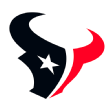
23. Houston Texans
Titus Howard, OT, Alabama State | Highlights
Why they picked him: After Deshaun Watson took 62 sacks last season, the Texans needed to find a way to protect their franchise quarterback. Houston expects Seantrel Henderson to start at right tackle, but did not have a viable candidate who can protect Watson on the left side. Howard brings talent and athleticism to a group who needed to improve this offseason after Watson had to play through injuries to his ribs and lungs last season.
Biggest question: Will Howard be ready to start right away, and do the Texans see him as a left tackle? Howard started all 11 games at left tackle in 2017, but moved back to right tackle last season, earning first team All-SWAC honors. Howard will be expected to step up right away to protect Watson. Howard was a high school quarterback who significantly changed his body by gaining weight in college to become a first round pick for the Texans. — Sarah Barshop
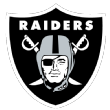
24. Oakland Raiders (from Chicago)
Josh Jacobs, RB, Alabama | Highlights
Why they picked him: With Marshawn Lynch seemingly choosing to retire rather than re-sign with his hometown team for one last ride, the Raiders need an every-down back who runs with a punishing style. But he’s more Charlie Garner than, say, Beast Mode. And that will have Jon Gruden champing at the bit to get him involved, along with new running back Isaiah Crowell and returner Jalen Richard, who was tied for the team lead in receptions last season..
Biggest question: Jacobs’ 640 rushing yards for the Crimson Tide last season were a career high. The 6.7 yards per carry he averaged as a freshman in 2016 was his high-water mark. Can he put it all together at the next level, though? At 5-foot-10, 220 pounds, he does run hard. — Paul Gutierrez
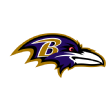
25. Baltimore Ravens
Marquise Brown, WR, Oklahoma | Highlights
Why they picked him: The Ravens desperately need playmakers for quarterback Lamar Jackson, and the most explosive offensive weapon in this year’s draft fell into their laps. Todd McShay said Brown is one of the fastest wide receiver prospects he’s ever evaluated in terms of game speed. Brown, a.k.a. Hollywood, will strike fear in defenses with his ability to blow past cornerbacks deep and turn short throws into touchdowns. How much of an impact can the cousin of Antonio Brown make in Baltimore? The Ravens ranked last in the NFL with 13 plays over 30 yards.
Biggest question: Will Brown end the Ravens’ awful track record at wide receiver? In terms of history, the safer choice for Eric DeCosta’s first pick as Ravens general manager would’ve been guard Cody Ford or center Erik McCoy. The Ravens have been the worst team at drafting wide receivers. Only one wide receiver drafted by the Ravens produced a 1,000-yard season (Torrey Smith in 2013), and all three selected in the first round (Travis Taylor, Mark Clayton and Breshad Perriman) rank among the franchise’s top busts. Baltimore is hoping to end that trend with Brown. The biggest knock on him is his thin frame. There are durability concerns considering he’s 5-feet-10, 166 pounds. But the Ravens couldn’t pass on the 11th-ranked prospect on McShay’s board. — Jamison Hensley
Montez Sweat, DE, Mississippi State | Highlights
Why they picked him: The Redskins lost Preston Smith to free agency and needed another outside linebacker opposite Ryan Kerrigan. They do have Ryan Anderson, a second-round pick in 2017, but he hasn’t yet shown he can be a quality pass rusher. But Sweat, who played at the same high school and college as Smith, gives them a quality player against the run who is also an excellent pass rusher. They wanted an edge rusher and, with Kerrigan turning 31 in August, they also need depth with an eye toward the future. Sweat recorded 11.5 sacks this past season and had 29.5 tackles for a loss the past two years.
Biggest question: His health. Sweat might have been a top-10 pick if not for concerns about a diagnosis of possible heart issues. There are now conflicting reports about whether he did have any issues or if there was a misdiagnosis. Sweat also drew concerns because he had been suspended while at Michigan State, eventually prompting him to transfer. The Redskins felt good enough about him to trade back into the first round and draft him. He’s tremendous value at this point of the first round — as long as those questions are answered in the affirmative. — John Keim

27. Oakland Raiders (from Dallas)
Johnathan Abram, S, Mississippi State | Highlights
Why they picked him: The Raiders have needs all over the field and the secondary is a glaring one, especially when it comes to defending tight ends. At a shade under 6 feet, and 205 pounds, Abram is larger than returning strong safety starter Karl Joseph, the team’s first-round pick in 2016 and might hit just as hard with five career sacks among his 170 tackles in two years at Mississippi State (he began his college career at Georgia). Plus, 17 of his 38 snaps as a primary defender came while lined up in the slot, and his 36 percent pressure percentage was highest in FBS among players with at least 50 pass rushes.
Biggest question: A box safety, Abram is far from a ballhawk with just two career interceptions, and the Raiders need guys to get picks. He offers size, though, but will he be able to cover tight ends in the AFC West like Travis Kelce? As mentioned earlier, that has long been a Raiders issue. — Paul Gutierrez
Jerry Tillery, Pos., School | Highlights
Why they picked him: Defensive tackle was the Chargers most obvious need heading into the draft, with only three defensive tackles currently on the roster in Brandon Mebane, Justin Jones and T.Y. McGill, so Jerry Tillery fills a need. The Chargers at times struggled to stop the run and generate interior pass rush. At 6-6 and 295 pound, Tillery’s explosiveness and length should help improve both of those areas defensively.
Biggest question: Tillery suffered a torn labrum in his shoulder last season that required surgery in March, so his availability for the start of the regular season remains a question mark. Also, some around the league questioned his passion for the game because of his eclectic background. However, Tillery produced in his final season at Notre Dame, finishing with seven sacks and two forced fumbles last season. — Eric D. Williams
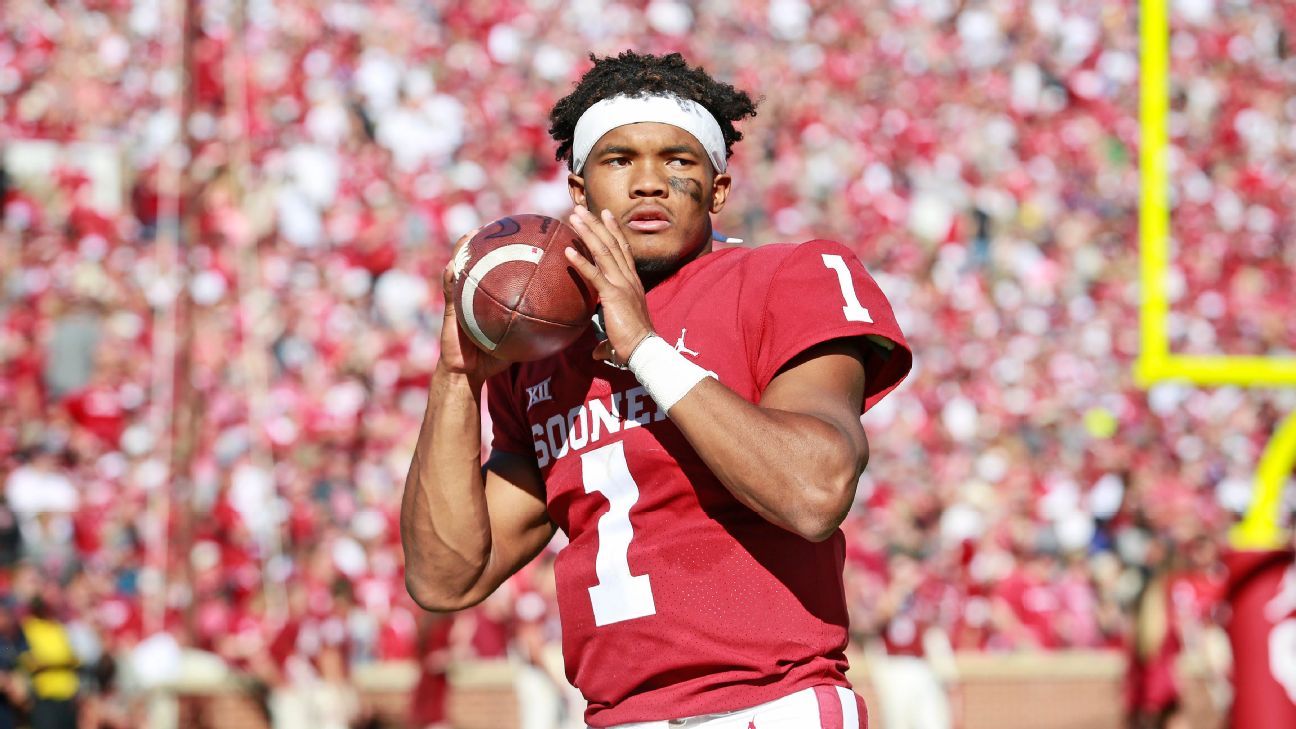
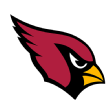 1.
1. 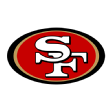 2.
2. 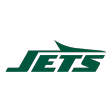 3.
3. 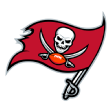 5.
5. 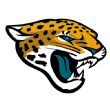 7.
7. 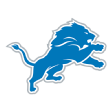 8.
8. 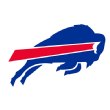 9.
9. 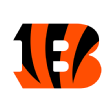 11.
11. 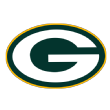 12.
12.  15.
15. 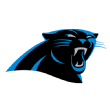 16.
16. 